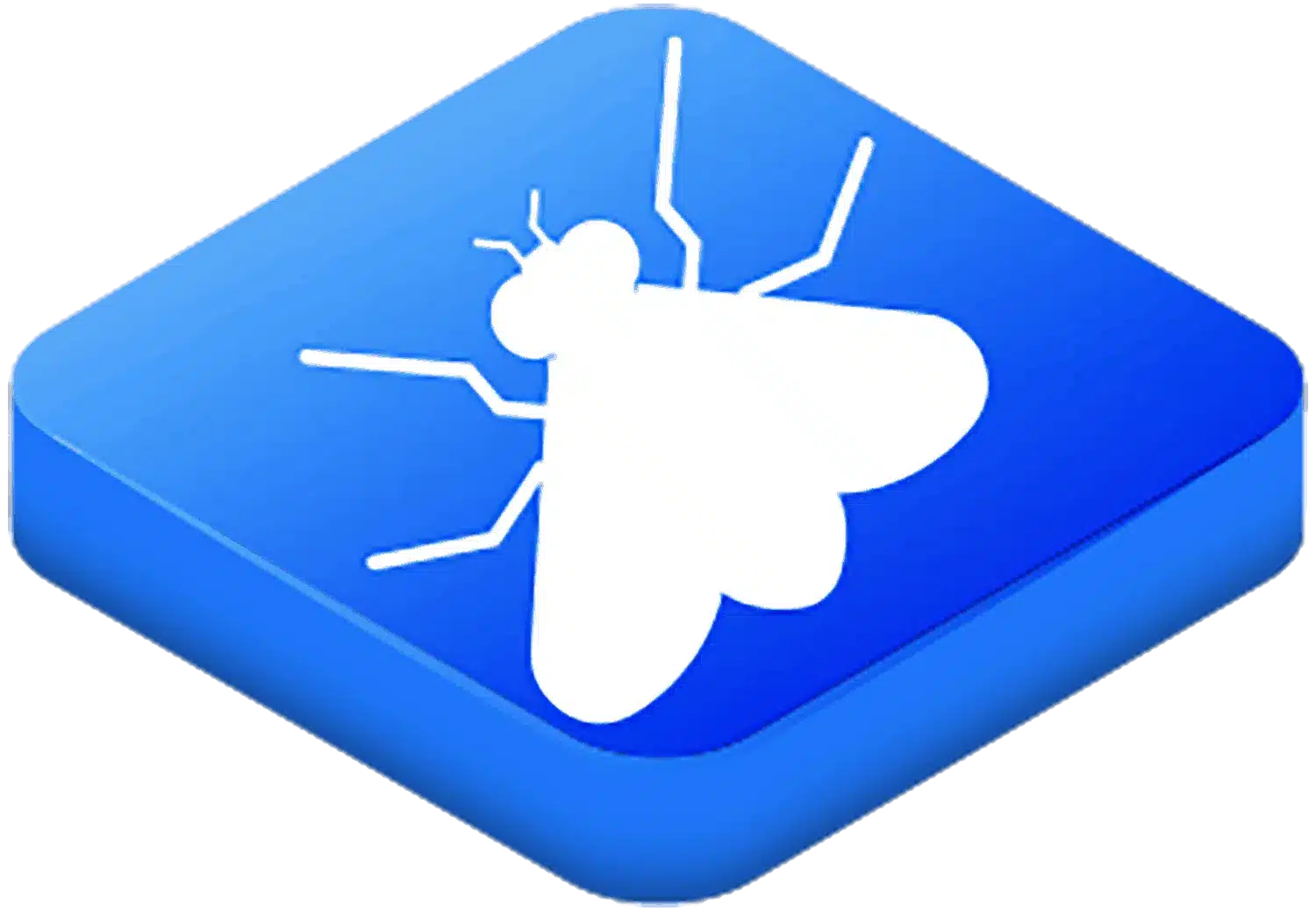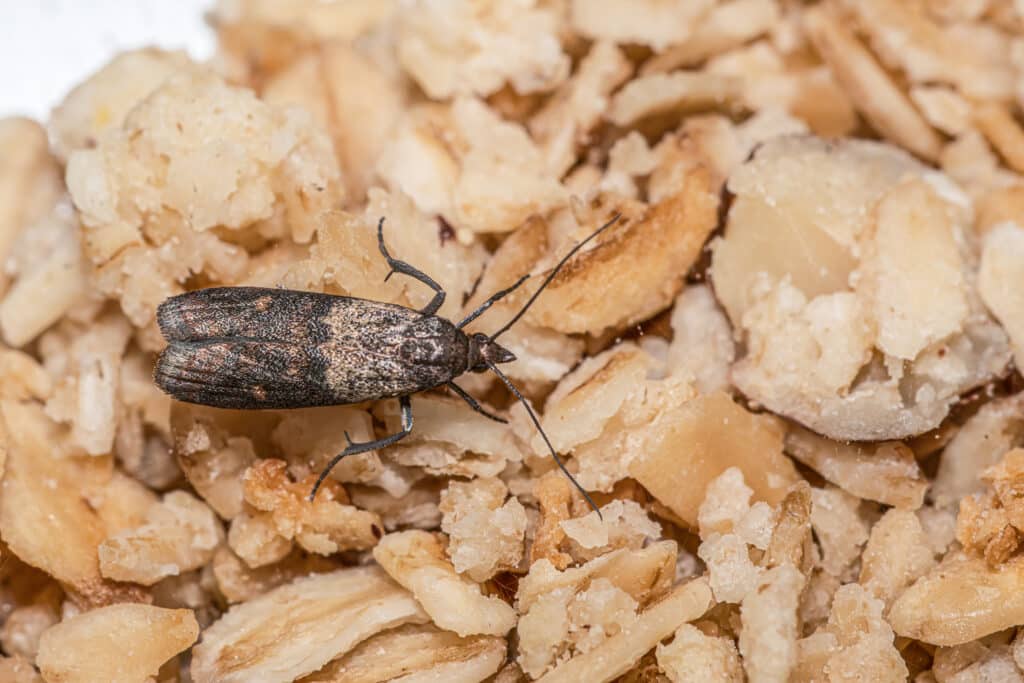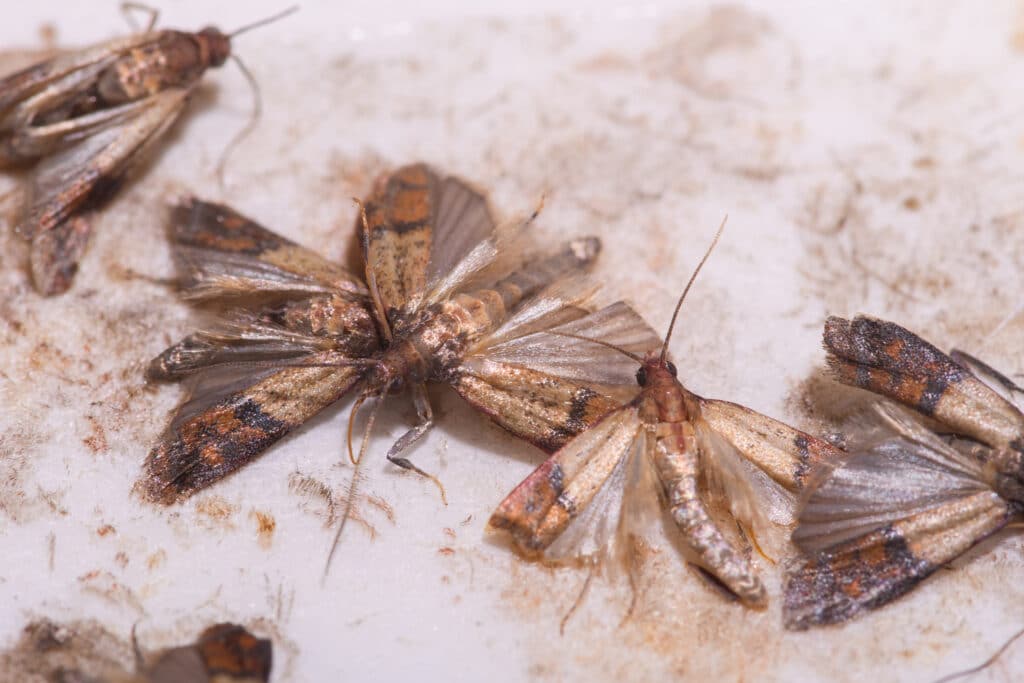
Types of Moths in Tennessee: Identification Guide
Types of Moths in Tennessee
Indian Meal Moths
Indian meal moths are common pantry pests that can quickly infest and contaminate stored food products in your Tennessee home. These persistent pests require professional identification and treatment to protect what matters most – your family’s food supply and peace of mind.
- Size: Adults grow up to 0.5 inches in length
- Wing Appearance: Forewings are reddish-brown with copper-colored tips and gray inner portions
- Resting Position: Wings sit in a roof-like position when at rest
- Behavior: Active primarily at night, attracted to light
- Food Preferences: Grain products, seeds, dried fruit, dog food, and spices
- Damage Method: Primarily contaminate food sources with discarded skin, fecal pellets, and silk webbing
- Common Locations: Pantries, food storage areas, and kitchen cabinets

Mediterranean Flour Moths
Mediterranean flour moths pose a serious threat to both residential pantries and commercial food processing facilities throughout Tennessee. These destructive pests can quickly establish infestations that compromise food safety and require expert intervention to eliminate effectively.
- Size: Adults can grow up to 1.5 inches long
- Wing Appearance: Pale gray with two black zigzag lines along the forewings
- Wingspan: Slightly less than one inch
- Resting Position: Wings sit at a slightly sloped angle when at rest
- Behavior: Less attracted to light than Indian meal moths
- Food Preferences: Flour, nuts, chocolate, seeds, beans, biscuits, and dried fruits
- Damage Method: Contaminate goods by attaching eggs to food particles and spinning silken tubes
- Common Locations: Mills, warehouses, grocery stores, restaurants, and home pantries
Webbing Clothes Moths
Webbing clothes moths specifically target and damage valuable natural fiber textiles and clothing items, often causing irreversible harm before you even notice their presence. Our team understands the emotional and financial impact of damaged family heirlooms and can help protect your cherished possessions with effective, family-safe treatments.
- Size: Adults are approximately 0.5 inches long
- Wing Appearance: Beige or off-white with a uniform coloration
- Wing Features: Narrow, fringed wings with small hairs
- Behavior: Avoid light, rarely seen flying, prefer dark enclosed areas
- Material Preferences: Natural fibers containing keratin, including cashmere, silk, wool, and fur
- Damage Method: Larvae feed directly on fibers, creating holes and damaged areas
- Common Locations: Dark closets, attics, basements, and enclosed storage areas

Casemaking Clothes Moths
Casemaking clothes moths can cause significant damage to your valuable natural fiber textiles and family heirlooms if left untreated. Our experienced pros can identify these elusive pests and implement targeted treatment strategies to protect your belongings while ensuring your family’s safety.
- Size: Similar to webbing clothes moths at approximately 0.5 inches
- Wing Appearance: Similar to webbing clothes moths but feature tiny, dark specks on their wings
- Behavior: Also avoid light and prefer dark spaces
- Material Preferences: Same natural fiber preferences as webbing clothes moths
- Damage Method: Larvae create protective cases from fibers and carry them while feeding
- Distinctive Trait: The protective cases made by larvae can sometimes be spotted on fabrics
- Common Locations: Same as webbing clothes moths—closets, storage chests, and undisturbed areas

